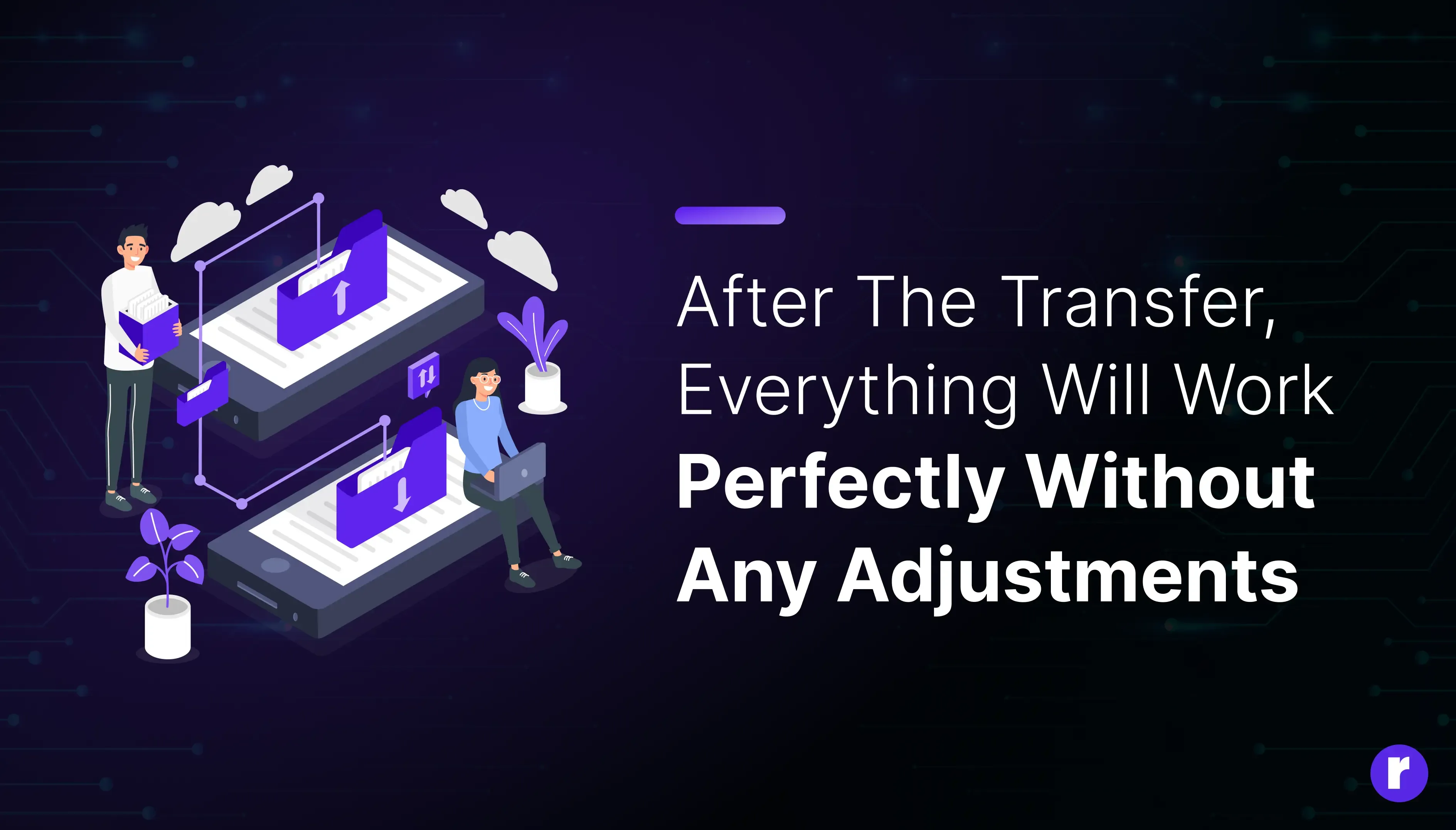The Ultimate Guide to Website Transfer: Separating Fact from Fiction in 5 Myths

Written by
Sanjay Jyani
Front End Developer
Palvi Tiwari
Front End Developer
Table of contents
Build with Radial Code
Transferring a website from one host to another can seem like a daunting task, often surrounded by myths and misconceptions. Whether you’re looking to switch hosting providers, upgrade to a better server, or simply reorganize your online presence, understanding the facts about website transfer is crucial. In this guide, we’ll dispel five common myths and help you navigate the process with confidence.
Myth 1: Website Transfer Will Lead to Significant Downtime

The Myth: Transferring your website to a new host will inevitably cause significant downtime, disrupting your business and driving away visitors.
The Reality: With proper planning and execution, website transfers can be completed with minimal to zero downtime. The key is to keep your old site live until the new one is fully functional. Here’s how to do it:
- Choose the Right Time: Plan the transfer during off-peak hours when traffic is low.
- Use Temporary URLs: Many hosting providers offer temporary URLs or staging environments where you can set up your website before switching the DNS settings.
- Test Everything: Before making the final switch, thoroughly test the new setup to ensure all links, images, and functionalities are working correctly.
By following these steps, you can ensure a smooth transition with little to no impact on your visitors.
Myth 2: SEO Rankings Will Plummet After a Website Transfer

The Myth: Moving your website to a new host or domain will destroy your search engine rankings, leading to a massive drop in traffic.
The Reality: A well-executed transfer should have little to no impact on your SEO rankings. Here’s how to maintain your SEO during the transfer:
- Use 301 Redirects: A 301 redirect is a type of HTTP status code. It tells browsers and search engines that a page has permanently moved to a new location. When a 301 redirect is set up, anyone who visits the old URL will automatically be taken to the new URL. Using 301 redirects is important for SEO.
If you’re changing your domain or URL structure, set up 301 redirects to inform search engines that your content has permanently moved to a new location. - Update Your Sitemap: Submit an updated sitemap to search engines like Google to ensure they’re aware of the changes.
- Monitor Rankings: Keep an eye on your rankings before and after the transfer. If you notice any drops, it could be due to other factors unrelated to the transfer.
By following these best practices, you can safeguard your SEO efforts and continue to enjoy steady traffic.
Myth 3: All Hosting Providers Handle Website Transfers for Free

The Myth: All hosting providers will transfer your website for free as part of their service.
The Reality: While many hosting providers offer free website transfer services, it’s not guaranteed. The cost and level of service can vary significantly:
- Check the Fine Print: Some hosts offer free transfers but with conditions, such as limited sites or data size.
- Assess the Quality: Free transfer services may not include comprehensive support. You might need to handle complex setups or specific configurations on your own.
- Consider Paid Services: If your website is complex, it might be worth paying for a professional service to ensure everything is transferred correctly.
Understanding what your hosting provider offers can save you from unexpected costs and complications during the transfer.
Myth 4: Website Transfer Is a One-Size-Fits-All Process

The Myth: Transferring a website is the same for every site, regardless of its size, complexity, or platform.
The Reality: The process of transferring a website can vary greatly depending on the specific needs of your site:
- CMS Differences: A WordPress site might require a different approach compared to a custom-built website.
- Size Matters: Large websites with extensive databases or multimedia content require more careful planning and execution.
- Customization Needs: If your site has custom configurations, plugins, or third-party integrations, these will need special attention during the transfer.
Tailoring the transfer process to the unique characteristics of your website is crucial for a successful move.
Myth 5: After the Transfer, Everything Will Work Perfectly Without Any Adjustments

The Myth: Once your website is transferred, everything will work perfectly without the need for any further adjustments.
The Reality: Even with meticulous planning, there might be a few adjustments needed post-transfer:
- Check for Broken Links: Even if all URLs were redirected correctly, some links might break during the transfer.
- Reconfigure Plugins and Themes: If you’re using CMS platforms like WordPress, some plugins or themes might require reconfiguration.
- Monitor Site Performance: Keep an eye on your website’s performance in the first few days after the transfer. If you notice any slowdowns or errors, address them immediately.
Being prepared to make minor tweaks after the transfer can ensure a seamless experience for your users.
Conclusion
Website transfer doesn’t have to be a stressful or overwhelming process. By dispelling these common myths and understanding the realities, you can navigate the transfer with confidence and minimal disruption. Whether you’re doing it yourself or working with professionals, proper planning and execution are key to a successful website transfer.
